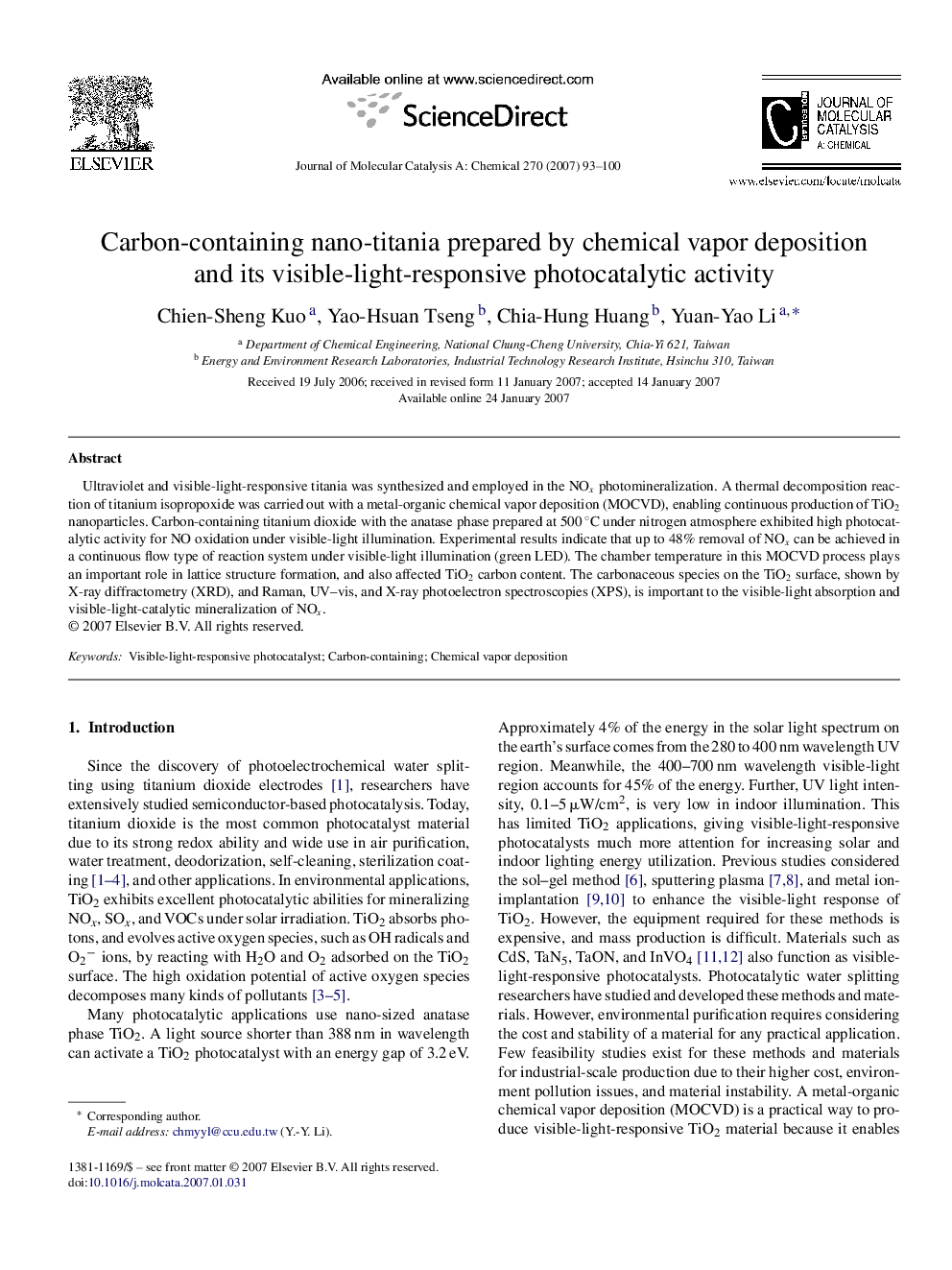| Article ID | Journal | Published Year | Pages | File Type |
|---|---|---|---|---|
| 68024 | Journal of Molecular Catalysis A: Chemical | 2007 | 8 Pages |
Ultraviolet and visible-light-responsive titania was synthesized and employed in the NOx photomineralization. A thermal decomposition reaction of titanium isopropoxide was carried out with a metal-organic chemical vapor deposition (MOCVD), enabling continuous production of TiO2 nanoparticles. Carbon-containing titanium dioxide with the anatase phase prepared at 500 °C under nitrogen atmosphere exhibited high photocatalytic activity for NO oxidation under visible-light illumination. Experimental results indicate that up to 48% removal of NOx can be achieved in a continuous flow type of reaction system under visible-light illumination (green LED). The chamber temperature in this MOCVD process plays an important role in lattice structure formation, and also affected TiO2 carbon content. The carbonaceous species on the TiO2 surface, shown by X-ray diffractometry (XRD), and Raman, UV–vis, and X-ray photoelectron spectroscopies (XPS), is important to the visible-light absorption and visible-light-catalytic mineralization of NOx.
Graphical abstractA thermal decomposition reaction of titanium isopropoxide was conducted to synthesize the visible-light-responsive titania under the metal-organic chemical vapor deposition process. Carbon-containing titania with the anatase phase prepared at 500 °C under oxygen free atmosphere exhibited a high photocatalytic activity for the oxidation of NO under visible light. The carbonaceous species on the TiO2 was supposed to be an important factor for the visible-light response. Figure optionsDownload full-size imageDownload as PowerPoint slide
